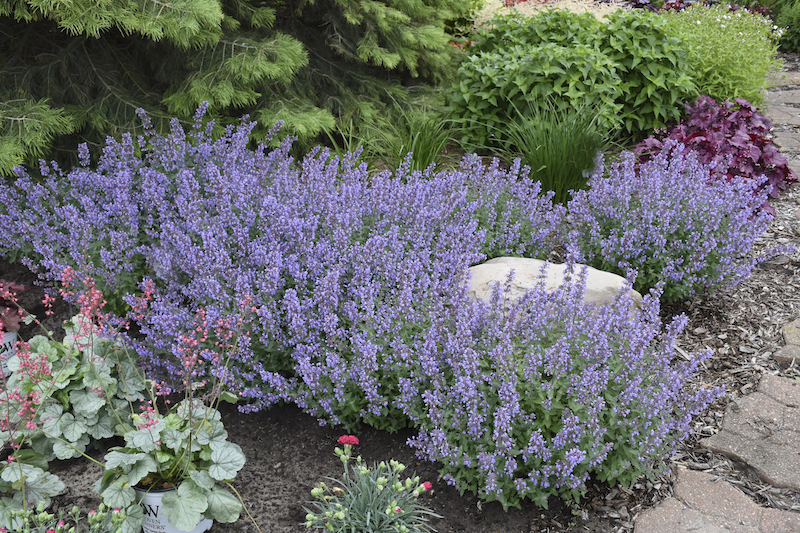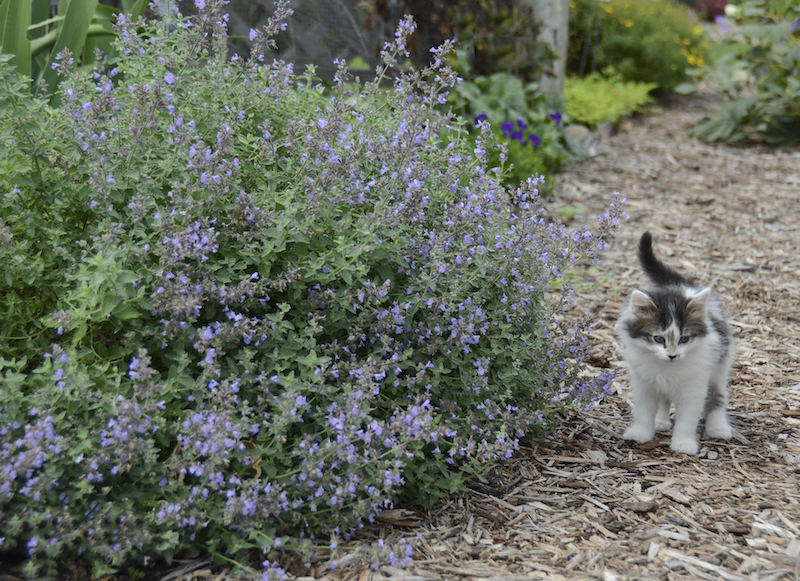Catmint is part of the mint family and has a light fragrance that wafts when the foliage is brushed or heated in the summer sun. Just like other mint family plants, Catmint is edible and not considered toxic for humans or pets. If large amounts are eaten, it can cause stomach upset, but rarely any other problems. Some people or pets may have reactions to the oils on the foliage and may experience contact dermatitis.

Is Catmint Poisonous to Children?
Catmint is not toxic to children. Playing in an area with Catmint or eating small amounts of the plant will rarely cause a reaction. Ingesting large amounts may cause stomach upset. If you suspect that your child has eaten a large amount of Catmint, contact your doctor for information on a treatment plan.
Is Catmint Poisonous to Dogs?
Dogs are not drawn to catmint in the same way cats may be. Fortunately, if a dog does decide to eat a few leaves or flowers, it is not toxic. Large amounts of Catmint need to be eaten for a dog to have much of a reaction. Stomach upset and temporary vomiting is the most common symptom. Contact your veterinarian for further treatment if you suspect your dog has eaten large amounts of Catmint.
Is Catmint Poisonous to Cats?
Catmint is definitely not poisonous for cats. It is a less potent relative of Catnip. Even though Catnip has less of the chemical that cats crave in Catnip, cats are attracted to this plant. Most often cats will lay on Catmint and roll around in it a bit. It can be alarming to see your plant flattened by a cat, but Catmint will quickly recover after some pruning or propping back up with stakes.

Is Catmint Poisonous to Other Animals?
Catmint is not toxic to any livestock or other animals. Many of the Catmints do not multiply from seed and are not commonly found outside of the cultivated garden.
Symptoms Of Catmint Poisoning
The only symptom of Catmint poisoning is stomachache or temporary vomiting. This only comes from ingesting large amounts of the leaves or stem.
Preventing Catmint Poisoning
Catmint is not toxic for humans or animals and does not need to be excluded from contact. The plant could be used to keep deer out of an area. The deer are repelled by the smell and the leaf texture. Consider planting low-growing Catmint around plants that attract deer browsing. Catmint and Roses are a classic combination, and the catmint border may deter hungry deer looking to forage on the rose buds.
Pet Poison Helpline
If something were to happen to your furry friend, and you suspect that they are suffering from Catmint poisoning, there is a poison control hotline to call for 24/7 vet advice. It is called the Pet Poison Hotline, and their phone number is (855) 764-7661.
Sources:
"Nepeta (Catmint, Catnip)." The North Carolina Extension Gardener Plant Toolbox. plants.ces.ncsu.edu
"Nepeta cataria - L." Plants for a Future. pfaf.org
 |
Author Robbin Small - Published 7-14-2022 |
